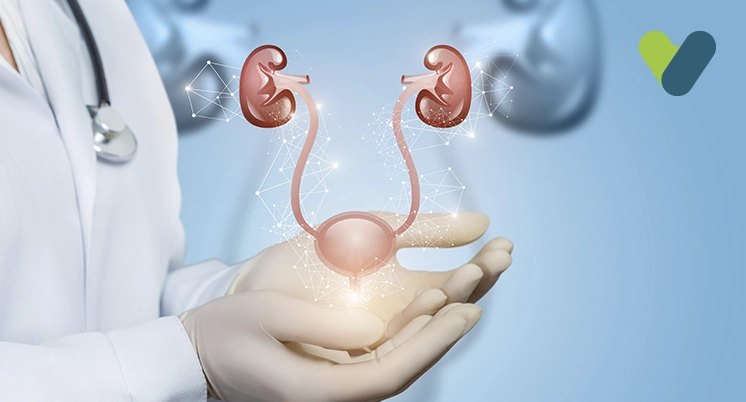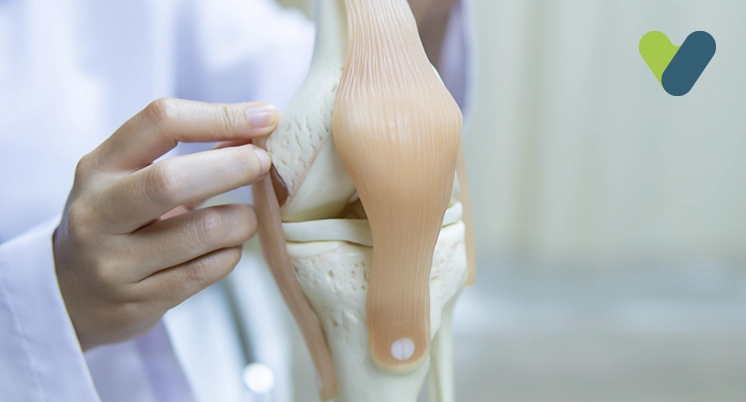Overview
Congenital heart diseases (CHDs) are the disorders of the heart. The term congenital refers to conditions that exist from birth. Whenever a baby's heart does not function fully during pregnancy, several problems may be faced. The most typical kind of birth abnormality is the congenital heart defect.
Congenital heart defects can alter the way in which the heart pumps blood. These changes may cause the blood to move too slowly in the body, to move in the wrong direction, or to stop flowing entirely.
Congenital heart abnormalities come in a variety of forms. They may occur in one or several locations within the heart. The most typical forms are of these abnormalities are listed here:
The openings seen inside the wall separating the left and right portions of the heart are called septal defects (holes in the heart).
Defects in the heart's valves that regulate blood circulation through the heart are referred to as heart valve abnormalities. The abnormalities related to large blood arteries affect how blood enters and leaves the heart.
Congenital heart abnormalities can range in severity from relatively minor issues that never require medical attention to problems that can be life threatening at birth. Critical heart condition refers to the most severe congenital heart abnormalities.
Congenital Heart Disease Surgery is typically required for infants with these abnormalities; this procedure is generally performed in the initial years of an infant’s life. Nevertheless, the signs of less severe heart abnormalities may not become obvious until adolescence or teenage.
Congenital heart disease surgery cost varies depending on the type of the procedure being carried out. The average congenital heart disease surgery cost in India is INR 1.5–2-25 lakhs.
Different types of and surgical approaches for congenital heart diseases
- Atrial Septal Defect This is a congenital heart condition in which the septum, which separates the uppermost chambers of the heart (atria), has a hole in it. A hole may cure by itself or require congenital Heart Disease Surgery; moreover, its diameter can differ with patients. One kind of the congenital heart defects is an atrial septal defect. The time of diagnosis, the extent and severity of symptoms, the diameter of the hole, and the possibility of further disorders all affect how an atrial septal defect is treated. Surgery may be required to close the hole at times. The symptoms of this condition can be treated with prescribed drugs. The hole cannot be filled with any recognised treatments. An open-Congenital Heart Disease Surgery procedure can be performed to close the hole. The extent of the problem, the patient's age, and the existence of other congenital defects will all influence the continuing treatment after these therapies.
- Atrioventricular Septal Defect (AVSD) This is a heart condition in which holes between both the right and left sides of the heart chambers are seen. Additionally, the abnormal formation of the valves, which are responsible for the flow of blood to all of these chambers, may potentially occur in this condition. In this condition, the blood flows in places where it should not. More blood might circulate to the lungs as well as the blood may contain less oxygen than usual. As a result of the additional supply of blood to the lungs, the heart and lungs have to work hard, which could result in congestive heart failure. Surgery is generally necessary for both complete and partial kind of AVSDs. Any holes inside the heart chambers are patched up during congenital heart disease surgery. The mitral valve is either replaced or fixed if it does not completely seal. The common valve is divided into two different valves—one on the right side and one on the left side—for a complete AVSD. The child's health and the precise nature of the AVSD determine the age at which surgery is performed. If at all possible, surgery should be performed before excessive blood flow to the lungs permanently damages the lungs.
- Coarctation of the Aorta Aortic coarctation is a congenital condition in which a portion of the aorta is smaller than normal. A new-born with this condition may experience major issues and require surgery and even other therapies soon after birth if constriction is extreme and hasn't been recognised before birth. While a baby develops and grows throughout pregnancy, the aorta may not form properly, resulting in this abnormality. The constricted aorta needs to be enlarged whenever symptoms appear, regardless of when the abnormality is discovered. This can be accomplished surgically or by a cardiac catheterisation treatment called balloon angioplasty. A catheter, which is a small, flexible tube, is placed into a blood vessel and then is guided towards the aorta during a balloon angioplasty treatment. A balloon placed close to the catheter's mouth is expanded to widen the blood artery as it approaches the aorta's restricted section. To restore normal circulation through the aorta, the constricted section of the aorta is eliminated during operation to treat a coarctation.
- Tetralogy of Fallot
The four heart and blood vascular abnormalities that makeup tetralogy of Fallot are as follows:
-
- A gap inside the heart's lower ventricles, which are the two lower chambers. Another name for this problem is a ventricular septal defect.
- A constriction of the major pulmonary artery as well as the valve. A different name for this illness is pulmonary stenosis.
- The inflated aortic valve, which opens towards the aorta (the largest artery of the body), appears to emerge from both the ventricles instead of just the left, as it would in a healthy heart. The ventricular septal defect is directly above the aortic valve in this condition.
- The right side of the heart, that is, the lowest chamber of the heart, has a stronger muscular wall than usual. The medical term for this is ventricular hypertrophy.
-
- Ventricular Septal Defect When the lining that develops between the right and left ventricles does not completely develop, a hole called a ventricular septal defect is formed. The ventricular septal defect is one type of the congenital heart disease. When a baby has a ventricular septal defect, blood frequently travels through the ventricular abnormality from the left ventricle towards the right ventricle before it enters the lungs.
The doctor may advise either cardiac catheterisation or open-Congenital Heart Disease Surgery to repair the hole and establish regular blood flow depending on the size of the hole, the child's clinical signs, and overall health. To ensure that the ventricular septal defect stays closed post surgery, the doctor will arrange for routine follow-up appointments. Most children who have ventricular septal defects that close (either naturally or through surgery) go on to lead healthy lives.
What happens before congenital Heart Disease Surgery?
A child might require a range of tests before congenital heart disease surgery. These tests include:- ECG
- Echocardiogram (ECHO)
- Chest X-ray
- Complete blood count (CBC)
- Cardiac catheterization
Always be open with the child's doctor about any medications they are taking. Add any medications, herbal products, as well as vitamin supplements you purchased over the counter.
Discuss with the doctor when should the child’s blood thinners (drugs that make it difficult for blood to form clots), such as aspirin and Coumadin, be stopped. Find out which medications the child should continue to take on the day of the congenital Heart Disease Surgery.
On the day of congenital Heart Disease Surgery –
- Most frequently, the child will be instructed to not consume food or drinks the night before the procedure.
- Any medications prescribed should be administered to the child with a little sip of water.
- The child should be present at the hospital at the specified time with an adult. What happens after congenital Heart Disease Surgery?
- The majority of children who undergo open Congenital Heart Disease Surgery must spend the first 2–4 days of recovery in the ICU. After they exit the ICU, they usually reside inside the hospital for 5–7 additional days.
- For patients who have a closed-heart operation, stays inside the hospital's ICU are frequently short. A child may need to stay in the hospital for a duration of time following highly complex congenital cardiac surgery.
- The majority of the wires and catheters inserted at the time of congenital Heart Disease Surgery will be removed when the child is discharged from the ICU. The kid can need help to begin many of their routine everyday activities. Some kids might start consuming food and beverages independently in a day or two, while others might need more time.
- Parents and caretakers are instructed on what activities are safe for their children to engage in following hospital departure, how to take care of any incisions, and how to provide any necessary medications to their children after congenital heart disease.
- The child requires rest at home for at least another few weeks after this surgery. Queries like ‘when can the child resume attending school’ should be discussed with the healthcare provider.
- The state of the child, the nature of the abnormality, and the surgical procedure performed all affect the success of congenital cardiac surgery. Many children fully recover and go on to lead normal, fulfilling lives.


